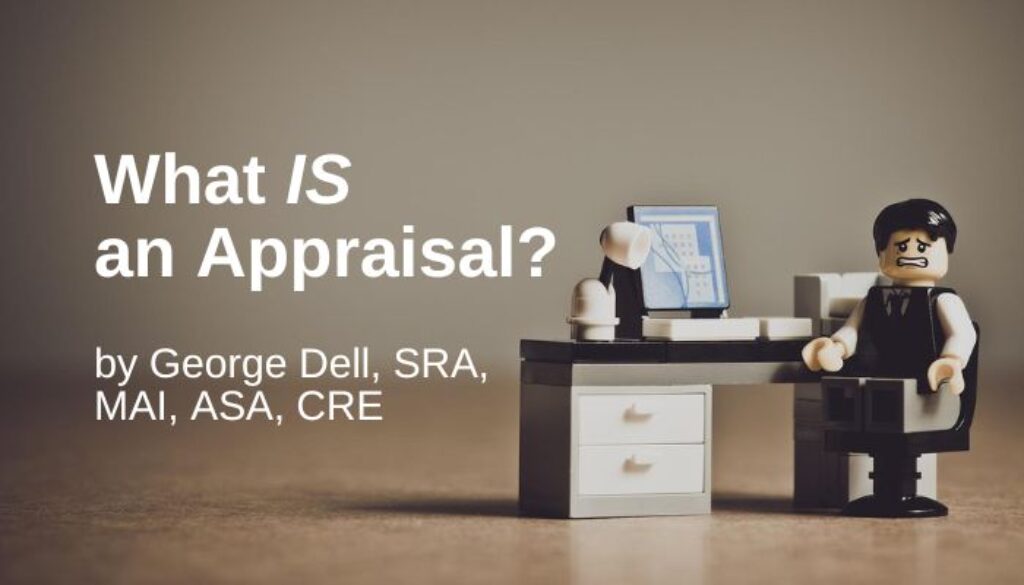An appraisal, everyone knows what is. Or do they?
To explore this question, we must consider the theoretical – what USPAP expects. And we must consider what actually happens – in real, practical, practical, practice. In addition, we must consider other “valuations” types.
We also might glance at what might be an ideal – given today’s data, interface, and AI, when blended with human expert knowledge. And what is not an appraisal.
AVMs are not appraisals. Evaluations are not (usually) appraisals. Hybrids are partially not appraiser work. Anything done by a non-appraiser is not an appraisal. (No standards needed.)
An appraisal requires: problem identification, property inspection, data researched, and analysis used. USPAP applies to appraisals but does not apply to any other form of valuation. None.
The quasi-governmental (Appraisal Foundation) standards have but two guides: 1) Do what peers do; and 2) Meet user expectations. And the standards have but three (do not violate) imperatives: 1) keep records; 2) use care in client identification; and 3) Don’t be grossly negligent. All else, even when called a rule, is only subject to a reviewer’s judgment of how “worthy of belief” is your work.
And one more thing: Do not be biased!
Do not be biased.
Current appraisal practices, user expectations, peer actions, and licensing education all require the same dogma:
- Pick some comps
- Make adjustments
- Opine exact number
Unfortunately, these current, expected, taught, and enforced requirements promote an analytically biased result. Huh!? How can that be? I picked evidence! The best evidence I could find!
What the profession, customers, and regulators have forgotten is — appraisal is market analysis.
The selection of comps, in the original, was designed to represent that market segment. To pick a few comps is convenient, but inherently subjective! The ‘pick’ is vulnerable to personal quirks, bias, or even subconscious desire to meet user expectations (as required per USPAP above). The analysis is of the supply and demand of all participants for the specific property. Not just three or five ‘comps’.
The appraisal process, as currently taught, expected, and enforced, is analytically biased. Biased!
One qualification: The nature of this bias is different from personal or (protected group) bias. The “appraisal process” bias has analytic bias. Unfortunately, this analytic error can help cover up, (or even facilitate) personal bias.
The analytic bias may be too high or too low. It might be intentional, habitual, unintentional, or just plain stupidly random! In statistics, in data science, in econometrics, it is bias, nevertheless.
Worst of all, analytic bias helps conceal personal bias, or even systemic bias (such as the common pressure to ‘hit the number’ in appraisals).
One last word. The assumption that price = value, as defined, when combined with the pick-comps-adjust process above, assures that there is an upward systemic bias! Let’s say a house sells once a year for three years, in an otherwise level market, then used as a ‘comp.’ The first-year sale price includes some 7% transaction costs, the second-year appraisal adds 7% again, and the third adds yet another 7%. Now this sale “proves” a ‘value’ some 21% higher, even though there has been no underlying increase in desirability!
This is “algorithmic-inflation,” which may cause part of the affordability and housing problem. It can be solved by “fundamental value” analysis. A fundamental value would not add transaction costs each time. Transaction costs are the difference between price to the seller, and price to the buyer.
Which is more relevant, and why? What is the “true” appraised value?
